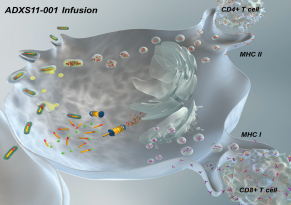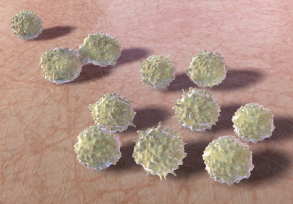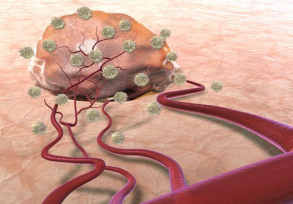Lm Technology™
The Advaxis Lm Technology™ uses live, attenuated bioengineered Listeria monocytogenes (Lm) and is undergoing clinical research as a therapeutic agent. We start with a live, attenuated strain of Listeria then add multiple copies of a plasmid that encodes a fusion protein sequence including a fragment of the LLO (listeriolysin O) molecule joined to the antigen of interest. This fusion protein is secreted by the Listeria inside the antigen presenting cells, and other cells, which has been shown to result in a stimulation of both the innate and adaptive arms of the immune system and the potential reduction in tumor defense mechanisms.
The Advaxis research platform is built on four elements of a cancer immunotherapy that may be clinically important.
The Advaxis Research Platform: 4 Elements of Cancer Immunotherapy
1
Access to Antigen Presenting Cells (APCs) to direct and target the immune response
Advaxis investigational immunotherapies are designed to preferentially infect the APCs and escape into the cytoplasm to secrete antigens for the targeted tumor.
2
Generate strong cytotoxic T-cell response against tumor antigens
Advaxis investigational immunotherapies are developed around a hypothesis of generating a strong T-cell response to clear Listeria that is redirected to the tumor via the secreted antigens.
3
Over-ride Checkpoint Inhibitors and negative regulators of cellular immunity
Acute “perceived” listeriosis is hypothesized to stimulate a maximum immune response that over-rides the checkpoint inhibitors.
4
Over-ride Treg and MDSCs within tumor microenvironment, enabling CTLs to kill tumor cells
Advaxis immunotherapies are being investigated for generating TAA specific T-cells that access the protected tumor microenvironment and suppress immune protective cells within the tumor.
Advaxis Cancer Immunotherapy Research Approach: 4 Elements In 1
1
Access APC, Secrete LLO-TAA, MHC1

2
CD8 T cell Expansion, Over-ride Checkpoint Inhibitors

3
Chemokines, Tumor Infiltration

4
Decrease Treg, MDSCs, Tumor Cell Lysis
